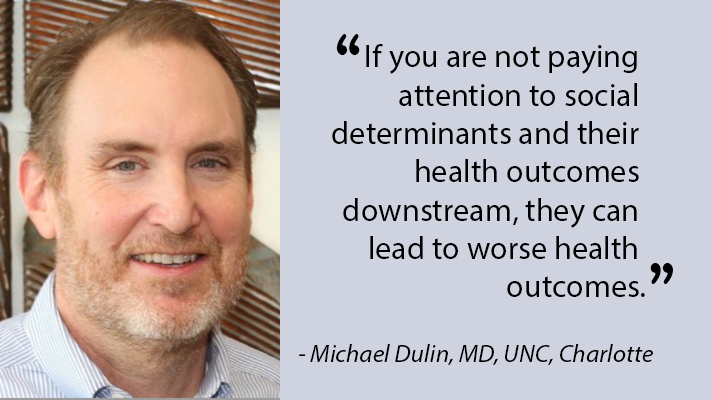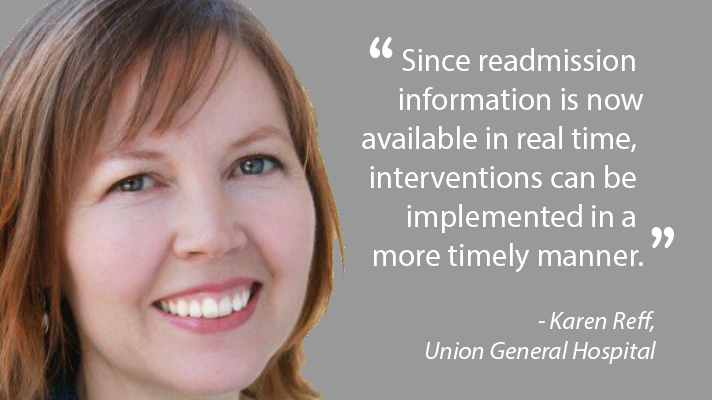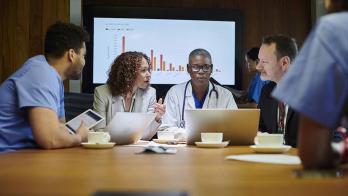
The HIMSS and Healthcare IT News Big Data and Analytics Forum is slated for October 24 and 25. Our reporters and editors have already interviewed many analytics and data experts who will be speaking at the event. The takeaway: Attendees will learn about early success stories, common challenges, big promises and plenty of reality checks.
The following slides highlight some case study successes from industry leaders.

While Big Data bring considerable hope to healthcare organizations, data scientists, researchers and cutting-edge clinicians, there is also no shortage of hype. Harvard Medical School assistant professor Leonard D’Avolio said that the healthcare sector needs to move beyond the hype, as in IT consultant Gartner’s noted Hype Cycle, and advance the conversation from Big Data being one concept into a broader understanding of the different technologies, practices and benefits that fit under the umbrella.
Read more: Beyond the hype

To get beyond the massive hype, clinicians, executives and researchers are going to have to master the fine art of reading Big Data to understand what lurks within — including insights and misperceptions. Health economist Joseph Doyle has been studying that very topic and recommended outlining strict research designs, creating the ability to zoom into only and exactly the data you need and avoiding the temptation to over-interpret all that information.
Read more: Tips for reading Big Data results correctly

Hospitals in Charlotte, North Carolina faced an influx of immigrants showing up at the ER for primary care. So Michael Dulin, MD, director of the academy for population health innovation at the University of North Carolina created a Big Data model to better grasp social determinants of health, engage patients, to reduce emergency visits and associated costs.
Read more: Charlotte hospitals analyze social determinants of health to cut ER visits

With a mere $50,000, Union General Hospital planned and launched an analytics program that enabled its staff to make more effective and timely patient interventions that ultimately reduced readmissions, according to decision support manager Karen Reff. The secret sauce? Arming clinicians with data that was once nearly impossible to amass and review.
Read more: Small hospital makes minor investment in analytics and reaps big rewards

The University of Mississippi Medical Center for Telehealth uses remote patient monitoring to better manage chronic diseases, including diabetes, hypertension and heart failure – diseases where education and timely interventions can improve individual healthcare and ultimately overall population health.
Read more: UMMC deploys predictive analytics to pick ideal patients for remote monitoring

MIT professor John Guttag heads the Data Driven Inference Group at MIT's Computer Science and Artificial Intelligence Laboratory. Machine learning is among the most rapidly evolving fields of computer science and as providers ratchet up analytics and Big Data to prepare for precision medicine and population health, machine learning as well as artificial intelligence and cognitive computing are poised to become even more valuable.
Read more: Guttag’s quick primer on machine learning for healthcare

View the full agenda and register at the HIMSS and Healthcare IT News Big Data & Healthcare Analytics Forum.
Read more about big data industry leaders in advance of this event:
⇒ Big Data: Healthcare must move beyond the hype
⇒ Tips for reading Big Data results correctly
⇒ Small hospital makes minor investment in analytics and reaps big rewards
⇒ MIT professor's quick primer on two types of machine learning for healthcare
⇒ Must-haves for machine learning to thrive in healthcare
⇒ UMMC deploys predictive analytics to pick ideal patients for remote monitoring
























